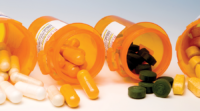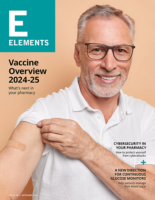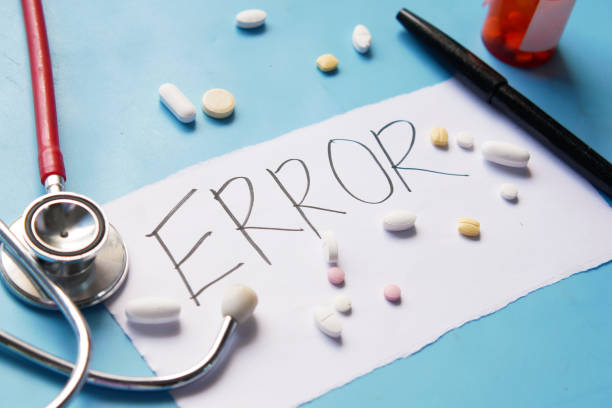Inside: Independent pharmacies commonly fail to stock enough product in their front ends, leaving gaps and bare spaces on the shelves. Discover why this practice (called the museum effect) can harm sales.
Independent pharmacies commonly fail to stock enough product in their front ends, leaving gaps and bare spaces on the shelves. A sparse row here. Some blank spots there. Sometimes an entire section left empty.
A few bare spots may seem harmless. But empty shelves make your pharmacy feel like a stale history museum. Not a modern, active retail pharmacy.
“When the department is sparse, it looks more like a display than a well-stocked fixture,” said Kyle Lentz, Category Analyst at Hamacher Resource Group (HRG), a firm that improves results across the retail supply chain by addressing dynamic needs such as assortment planning and placement, retail execution strategy, fixture coordination, item database management, brand marketing, and analytics. “It doesn’t look shoppable.”
Dave Wendland, Vice President, Strategic Relations and a member of the owners group at HRG, coined the term “museum effect” to describe this sparsity in the front end.
RELATED: How to Use Planograms to Guarantee Increased Pharmacy Retail Sales
The museum effect makes patients feel like they’re attending a closeout sale from a dying business. And it gives the impression that your pharmacy isn’t invested in anything front-of-the-counter. “It’s telling your customers, ‘Come here for your prescriptions. But we’re not really paying attention to the front end or OTCs.’ So, they’ll probably shop for those items elsewhere,” Lentz said.
Focusing on retail
More practically, when you don’t fully stock the shelves, you risk running out of products patients need. By the time you notice an item is out of stock, it could take days to get a new shipment. And that could damage your pharmacy’s reputation if it happens with items patients expect.
“It may be a high-demand product you should always have inventory of,” Lentz said, “because if you don’t, you’re going to lose sales.”
The museum effect occurs at every retail outlet, big or small, Lentz said. But the effect occurs more often at independent pharmacies because they place emphasis on patient prescription needs more than the retail aspects of their business.
Independent pharmacies would do well to shift their focus and adapt to the changing industry. “As margins shrink behind-the-counter, they can gain some of that margin back by selling over-the-counter products,” Lentz said. “Pay attention to your front end like it’s a crucial part of your business rather than something additional that you have to offer besides prescriptions.”
How to avoid the museum effect
Talking about stocking enough product is one thing. It’s another to do it. You don’t want to overstock either because when items sit on the shelf, money sits on the shelf.
“There’s a difference between stocking too much inventory and stocking the right amount of inventory,” Lentz said.
Each pharmacy will have different demands and needs. But Lentz said all pharmacies should keep certain general categories well stocked. The top five categories for independent pharmacies are cough and cold, digestive, vitamins, pain relief, and first aid.
Within those categories are best-selling items that HRG calls Never Outs®. “Never Outs generate the majority of sales for that category. They should never be out of stock because customers are looking for those products,” Lentz said.
Adjusting to your business’s needs
But if pharmacies have too much space, Lentz recommends filling wide rather than filling back. “If you have two products, it’s better to double face the product rather than putting one in front and one in back,” he said. “But if you have extra shelves in your front end, you really need to reevaluate your assortment. What products can you add that will benefit your customers?”
He suggests creating a customized end cap that you change monthly. Like an allergy end cap in March, a summer end cap with first aid supplies and sun care products, and a back-to-school end cap in August. “Otherwise, you can take that fixture down and add a counseling area or expand your waiting area,” he said.
Beyond those top categories, pharmacies will have their own specializations that influence their stocking strategies.
Most importantly, pharmacies need to know what their particular patients buy. The catch-all categories only go so far. To get a good grip on your sales, Lentz suggests mining point-of-sale (POS) data for at least a few hours a month.
“If pharmacists know what’s selling, they’ll be in a much better position to manage their stock,” Lentz said. “Better self-awareness of your front end is going to equal better outcomes and better sales. You’ll stock the right product, stock the right amount of that product, and build your categories based on the importance to your pharmacy customers.”
The Top 5 Categories to Never Run Out Of
Keep these general categories in your pharmacy’s front end well stocked.
1. Cough and cold
2. Digestive
3. Vitamins
4. Pain relief
5. First aid
Want more independent pharmacy business tips? Subscribe to our weekly e-newsletter.












